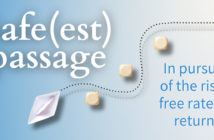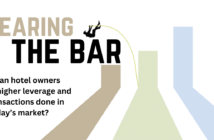by Rushi Shah
To gauge your health, a doctor assesses your blood pressure and cholesterol levels. When evaluating the economy’s health, a telling vital sign is investors’ sentiment in the fixed-income market and the amount of returns they are willing to pay in exchange for the commensurate term of the risk. Known as the Yield Curve, it reflects the bond returns at different maturity dates and is a major determinant for the cost of capital for lenders and investors. The Yield Curve’s shape is a good barometer of the economic outlook as seen by the traders and investors. Current loan rates for all loan types, including those for commercial real estate refinance and acquisition, are subsequently dependent on it.
At the time of writing, the one-month London Interbank Offering Rate (LIBOR or the rate that banks lend money to each other) is 2.1%, compared to a 5-year LIBOR Swap (the bank-to-bank lending rate for 5 years) rate of 2.95% and 10-year rate of 3% (the bank-to-bank lending rate for 10 years). The difference between the one-month LIBOR rate and the 10-year Swap rate shapes the Yield Curve, and is currently 0.9%. This is a sign of a flat Yield Curve, compared to its peak in the last three years when the difference was much larger at 3%. Historically a flat Yield Curve signals an economic slowdown. For example, in 2008 the curve flat-lined to 0, essentially reflecting the probability of recession. Based on today’s Yield Curve, there is plenty of debt capital hungry for deals.
The current Yield Curve’s shape also shows there is more investor demand for shorter term floating-rate bonds than longer terms (i.e. 10 years). This has caused a resurgence of activity in the floating-rate CMBS market, with many fixed-rate loan players, such as global investment banks, getting in on the game. Since floating-rate non-recourse loans were already popular debt fund instruments, this additional capital joins a crowded playing field.
How do floating-rate loans compare to fixed-rate loans?
A typical floating-rate CMBS loan has a 3-year term with two, one-year extension options and allows for a slightly higher leverage in the former of lower debt yield, then typical fixed-rate loans. For example, a 10-year, fixed-rate CMBS loan is usually possible at an 11 debt yield for a select-service hotel, compared to a 3-year, floating-rate CMBS loan at a lower 9 debt yield (debt yield is the property’s underwritten net cash flow divided by the loan amount). Why the difference? Investor risk. With the shorter, floating-rate loan investors hold the risk for less time, which allows for a lower debt yield. When the risk is held longer on a 10-year deal, a buffer is added.
Lower risk leads to lower rates. As of writing, floating-rate CMBS loans are pricing as low as one-month LIBOR plus 2% to one-month LIBOR plus 3.5% where current one-month LIBOR is 2.1%. Keep in mind that the rate floats and can change as the one-month LIBOR governed by the Federal Reserve changes. Most floating-rate loans are interest-only and include a rate cap.
Quality hotel assets in good markets with strong sponsorship are eligible for CMBS floating-rate loans. Because these loans are less profitable for lenders, loans $15 million or higher are preferred. Floating-rate loans can be pre-paid without penalty typically after the first 18 months.
Are short-term floating-rate loans better than longer-term, fixed-rate CMBS loans?
Floating-rate loans are a good alternative if you don’t need long-term financing. However, based on today’s Yield Curve, a 10-year, fixed-rate loan may better serve you. Currently long-term rates are still lower and short-term rates higher than historic levels. You can lock into a relatively low rate and keep your interest rate costs down longer. At the time of writing a 10-year, non-recourse fixed-rate loan on a quality hospitality asset ranges from 4.9% to 5.4% with a 30-year amortization. You can also remove personal recourse and monetize accrued equity as cash out.
Bottom line, floating-rate loans are another arrow in your financing quiver to target the optimal financing structure for your hotel.




